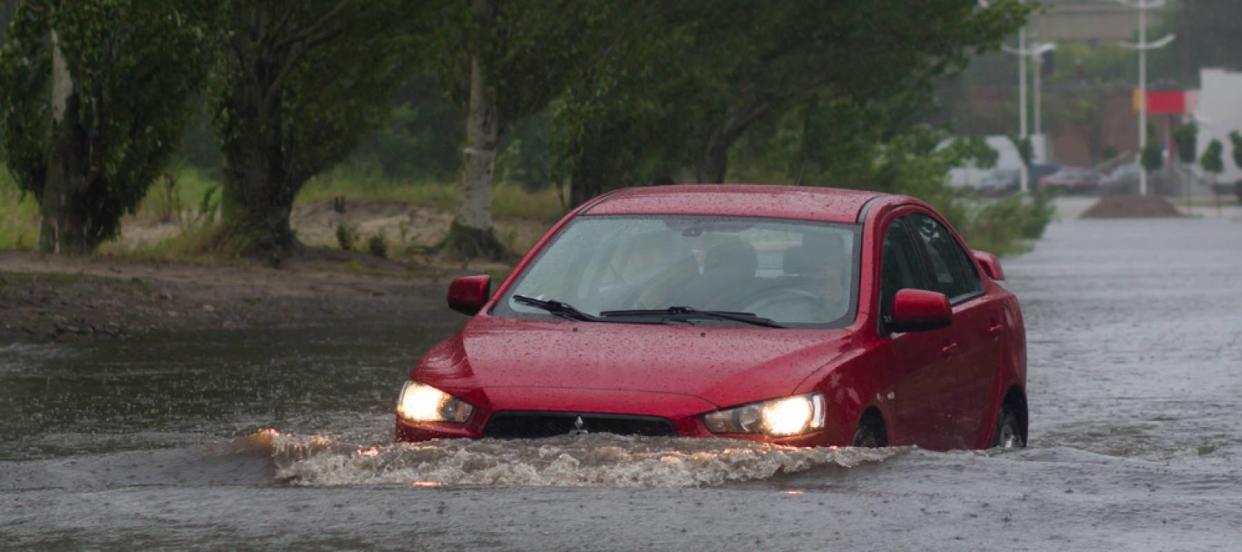Thousands of cars 'rotting from the inside out' are about to hit the market. How to protect yourself from shady secondhand sellers

There are a few weeks left in this year’s hurricane season, but a secondary flood has already begun as thousands of storm-damaged cars are expected to hit the market.
In the wake of Hurricane Ian, CARFAX estimates that as many as 358,000 vehicles could have been damaged in the storm. And many will make their way back onto the roads — sometimes with the new owner completely in the dark about the vehicle’s history.
“We are seeing these flooded cars show up all around the country, putting unsuspecting buyers at risk,” said Emilie Voss, CARFAX spokesperson. “Cosmetically these cars might look great, but if you don't know what to look for, it's nearly impossible to tell they are literally rotting from the inside out.”
That means for drivers looking to get a good deal on a used car, that sweet new ride could turn out to be one sour lemon. Here’s how to avoid ending up behind the wheel of one.
Don't miss
A TikToker paid off $17,000 in credit card debt by cash stuffing
Invest your spare change and turn your pennies into a productive portfolio
Too many Americans are still missing out on cheaper car insurance
Thousands of cars damaged every year
When a vehicle has been badly damaged in a hurricane or flood, insurance companies will often categorize the car as a total loss, assign it a “salvage title” and sell it to a junkyard or vehicle rebuilder.
A car with a salvage title can’t be driven on public roads in most states. However, rebuilders can repair the cars and have the vehicle reinspected to qualify for a rebuilt title. Then they can be legally driven and resold.
But sometimes, owners won’t report the damage; maybe because they didn’t have the appropriate auto insurance coverage and couldn’t make a claim. Then the damage won’t show up on the vehicle’s title, and the owner may try to pass off their soppy jalopy to unsuspecting buyers.
Even if the damage is reported, less scrupulous dealers will resell fixed-up cars under a new title in states that have more relaxed title laws.
Thousands of cars are damaged or destroyed by floods every year, Consumer Reports says, and many of them are transported to different states to be resold to drivers who don’t recognize the signs of a water-damaged vehicle.
Recently, Carfax estimated that in addition to the 358,000 vehicles damaged by Ian, more than 378,000 flooded cars were back in use nationwide — with Texas and Florida alone accounting for over a quarter of them.
Signs of flooding to watch out for
A car once classified as a salvage vehicle will probably come at a low price, but water can really trash a car’s mechanical, electrical and safety systems.
Even if the vehicle is roadworthy now, damage from flooding can take months or years to reach a car’s internal systems — and even then it can be difficult for the untrained eye to spot. And interior contamination of bacteria and mold can make an unsafe environment for your family.
Consumer Reports says there are some telltale signs a car has been submerged in water. It suggests you inspect:
The carpeting. Is it muddy or musty? Alternatively, is it suspiciously new in an old car? Does it match the brand of the car?
Exposed screws. Check both the seat-mounting screws to see whether the seats have been removed to help dry the carpeting and check any other exposed screws for signs of rust.
Difficult-to-clean places. Inspect all the nooks and crannies like gaps in panels in the trunk or hood or on the bottom edges of brackets and panels for signs of mud or debris.
The lights. Flooding can leave a visible waterline on a car’s lens or refractor.
Do your due diligence
Since it may not be obvious a car has been damaged by floodwaters, or shady sellers may have “washed” a title by making undisclosed repairs, it’s up to buyers to protect themselves.
Fortunately, there are a few resources to help uncover a car’s history.
The National Motor Vehicle Title Information System helps consumers run background checks on cars. And the National Insurance Crime Bureau’s free service, VINCheck, allows drivers to check whether a car has been reported as a salvage vehicle by a participating insurance company.
But since some damage is never reported, these systems aren’t foolproof. A buyer’s best protection is to have a professional mechanic run a detailed inspection on any suspect vehicle.
Instead of buying from a private seller, consider working with a trusted company that thoroughly inspects its cars so you can be confident you’re buying a safe pre-owned vehicle.
What to read next
‘This truck can’t do normal truck things’: YouTube star says towing with Ford’s new electric pickup is a ‘total disaster’ in viral video — but Wall Street still likes these 3 EV stocks
'I just can't wait to get out': Nearly three-quarters of pandemic homebuyers have regrets — here's what you need to know before you put in that offer
'Remarkable reversal': President Biden just (quietly) scaled back student loan forgiveness — and the change could impact up to 1.5M borrowers. Are you one of them?
This article provides information only and should not be construed as advice. It is provided without warranty of any kind.

